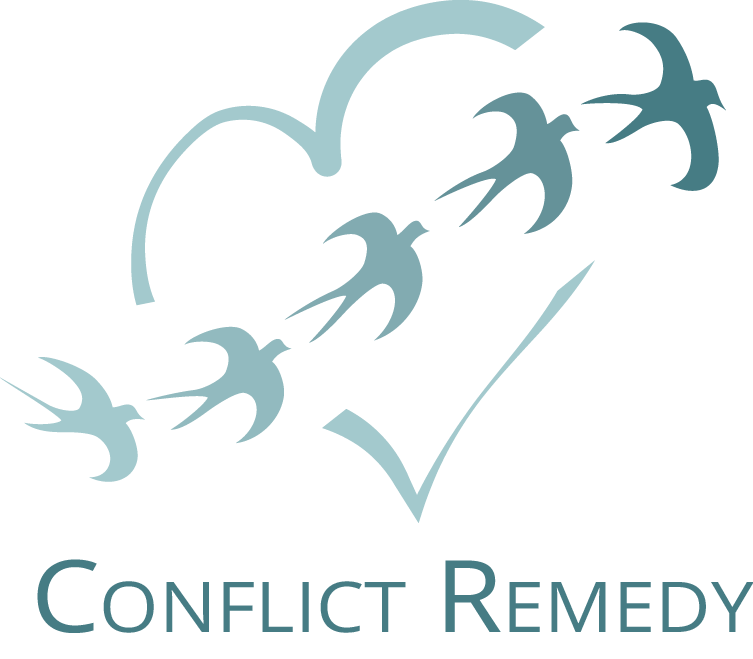
background photo by Jason Wong on Unsplash , sign by Lorraine Segal
Bystanders can stand up and stop workplace gossip.
Gossip is a very common problem at work. People often feel it is a harmless way to connect, but talking about people behind their backs, particularly when it is malicious or discloses personal information workers would rather keep private, can fuel conflict, grudges, and bullying. It can be used to solidify a negative story members of a mob are telling, casting the target as the problem. It can escalate a workplace feud or make people feel alienated, which is particularly pernicious when they are a member of a minority. And, in turn, this affects productivity and even turnover at work. If people don’t feel they belong, they are less likely to stay and less likely to contribute their ideas and creativity.
But how can you stop gossip? One approach is through educating bystanders.
Recently I was giving a follow up workshop on organizational conflict, authority, and responsibility for a wonderful non-profit. One participant mentioned they had a lot of staff gossip in one of their programs. She never started it and felt uncomfortable when it was happening, but didn’t know what to do. Other staff members agreed. She asked me how to prevent it, proposing I come in and do a mediation. While mediations can be immensely helpful, I thought there might be a simpler solution.
I asked her, “What do you do when you’re there and people start gossiping?”
“I just listen,” she said.
“You don’t have to do that,” I said.
She looked confused.
I explained there were (at least) two ways she could change her response:
- She could politely interrupt, tell them she doesn’t like talking about people who aren’t there, and ask them to stop.
- She could walk away as soon as the gossip started.
With both methods, she is refraining from giving the gossip any energy. People won’t gossip if no one wants it or pays attention.
At the end of our group discussion, I asked all the staff members raise their right hands and pledge to stop listening to gossip, to either intervene by saying something or to leave. They willingly agreed and looked relieved and energized!
Bystanders can become upstanders.
As in this example of problematic workplace interactions, bystanders can, with encouragement and practice, learn to become upstanders. There are often more witnesses than active participants in negative encounters, and empowered bystanders can learn techniques to stand up for what is right and make the workplace better for everyone, one interaction at a time. It is important for leaders to offer training and support. And if enough bystanders become proactive allies, the whole workplace culture can shift in a positive direction.
 Lorraine Segal has a deep passion for helping leaders in organizations and corporations communicate more clearly,manage conflicts, and let go of resentments. The goal: to create a more harmonious and productive workplace. Through her business, Conflict Remedy, Lorraine creates customized training and coaching programs for non-profit organizations, corporations, and government agencies. She is also lead instructor for the Conflict Management Certificate, a professional development program at Sonoma State University. She is a contributing author to the books, Stand Up, Speak Out Against Workplace Bullying and Living Together: Surviving a Pandemic. She writes a blog through her Conflict Remedy website and was listed as one of the Top Conflict Management experts to follow on LinkedIn. Contact Lorraine at https://ConflictRemedy.com for more information, to request a free consultation for you and your organization or to sign up for her newsletter.
Lorraine Segal has a deep passion for helping leaders in organizations and corporations communicate more clearly,manage conflicts, and let go of resentments. The goal: to create a more harmonious and productive workplace. Through her business, Conflict Remedy, Lorraine creates customized training and coaching programs for non-profit organizations, corporations, and government agencies. She is also lead instructor for the Conflict Management Certificate, a professional development program at Sonoma State University. She is a contributing author to the books, Stand Up, Speak Out Against Workplace Bullying and Living Together: Surviving a Pandemic. She writes a blog through her Conflict Remedy website and was listed as one of the Top Conflict Management experts to follow on LinkedIn. Contact Lorraine at https://ConflictRemedy.com for more information, to request a free consultation for you and your organization or to sign up for her newsletter.
Related Blog post: Does Your Work Culture Promote Psychological Safety?
© Lorraine Segal ConflictRemedy 2021
